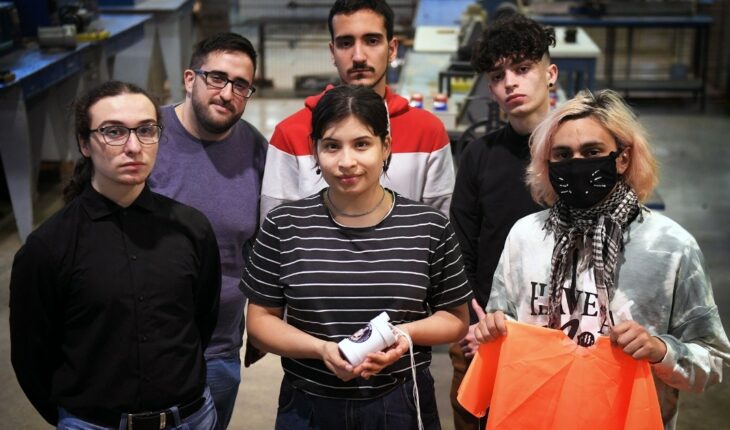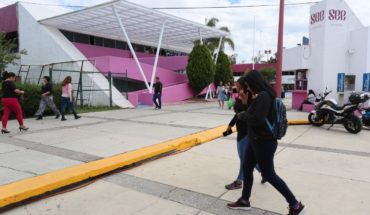On Tuesday 1/11 at 9.30 am. The final instance of the CANSAT Argentina competition will take place at the Teófilo Tabanera Space Center of the National Commission for Space Activities (CONAE), in Falda del Cañete, Córdoba.The five finalist teams of the contest are composed of girls and boys from schools in the Autonomous City of Buenos Aires, Córdoba, Formosa and Misiones, who will launch their CANSAT satellites on a rocket, to meet the objectives of the space missions they designed. Satellites designed by high school students
CANSAT is a competition driven by the world’s leading space agencies, such as NASA and the European Space Agency. In Argentina, it is organized by the Ministry of Science, Technology and Innovation (MINCyT) and CONAE to bring young people closer to space activity, in line with the National Space Plan carried out by the Argentine space agency. The proposal consists of reproducing at scale the entire process by which a satellite is designed, built, tested, launched and operated, whose size does not exceed that of a soda can – hence the term CAN (can) and SAT (satellite), for its acronym in English – and launch it on a rocket. The CANSAT competition started in June 2022, with 850 teams enrolled from secondary schools in all provinces of the country. In total, 4,500 students received training from professionals from CONAE and the National Technological University (UTN), in order to acquire the knowledge, tools and materials necessary to carry out the development of the project.
After overcoming different instances of the competition, five teams reached the final, whose CANSAT must fulfill the primary mission proposed by CONAE: measurement of pressure and temperature during the time in flight, and the transmission of these data to the earth station, at least once per second. They will also fulfill a specific secondary mission designed by the students. The finalist teams are:
Technical School N°9 D.E 7 “Eng. Luis A. Huergo”, Autonomous City of Buenos Aires. Team: Caelus. Mission: NIXSAT. Secondary objective: to measure air quality with pollution sensor. Members: Melanie Aguirre, Román Calvo, Nicole Pérez Vargas, Martín Sánchez Solé and Pedro Taquino. Teacher: Gustavo Nicolás Ferreyra.
San José Technical Institute, city of Justiniano Posse, Córdoba. Equipment: electroSix. Mission: sanSat-6. Secondary objective: to analyze the quality and composition of the air with a sensor of different gases. Members: Abril Carballo, Nicolás Markievich, Matías Nazareno Orso and Luciana Rodriguez. Teacher: María Rosa Salvay, Elena Renaudo I
Villada Salesian Technical Institute, city of Córdoba. Team: gVIE. Mission: mCALCAN. Objective: to measure the atmosphere and its conditions, with the aim of assembling an atmospheric profile. Members: Luciano Cortesini, Ignacio Gil, Tomas Giraudo, Alejo Lopez and Franco Palombo. Teachers: Martín Bedouret, Federico Ferraro.
Provincial School of Technical Education No. 3, city of Pirané, Formosa. Team: MERAKI. Mission: ARDACCI 1. Objective: to measure atmospheric conditions at different heights (pressure, temperature, humidity and CO2 concentration) for information for firefighters in the province of Formosa. Members: Ricardo Daniel Videla Martinez, Juliana Agustina Gonzales, Geronimo Ramon Sosa, Camila Gimena Farias and Alexis Peloso. Teacher: Ruben Alberto Asselborn.
Provincial School of Technical Education No. 18, city of Puerto Esperanza, Misiones. Team: Ad Astra. Mission: Proy. Zeus. Objective: to carry out a technological demonstration of cloud seeding using metal streamers to control fog and hail. Members: Emanuel Durks, Javier Espinola, Priscila Idalencio, Esteban Hartmann and Santiago Vaz. Teacher: Edgardo Doberstein.
The CANSAT satellites will be launched from the CONAE space center in Córdoba, aboard a rocket of the company SKYTEC of 1.10 m high and 80 mm in diameter. Once they reach their apogee, up to about 300 meters high, the CANSATs will detach from the launcher and begin to fulfill their missions. From that moment, students will be able to check the operation of their payloads and perform tests and measurements, with the accompaniment of professionals from CONAE and UTN.





